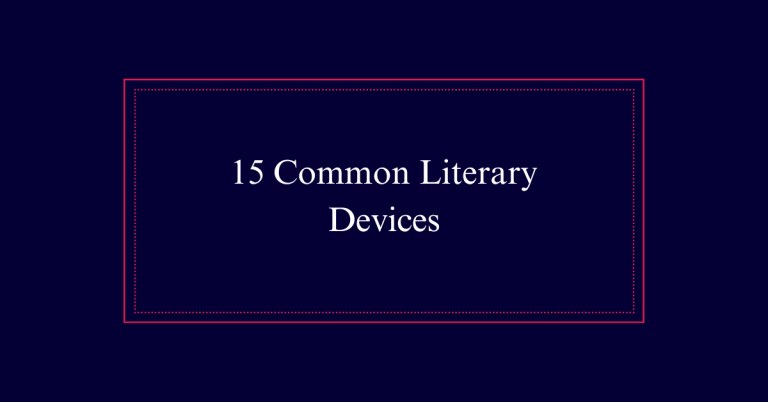What is an epistolary novel? Definition and examples
An epistolary novel is a type of narrative conveyed through letters, diary entries, or other personal documents. This style allows readers to access characters’ private thoughts and emotions directly.
The format offers multiple perspectives, adding depth and complexity to the storytelling. Originating in the 16th and 17th centuries, notable examples include Samuel Richardson’s ‘Pamela’ and ‘Clarissa.’
These novels often explore societal norms and historical contexts, creating a sense of immediacy and realism. To discover the intricate ways this unique form offers an immersive experience, keep exploring.
Definition of Epistolary Novels
Epistolary novels are narratives conveyed through written communications, such as letters, diary entries, and newspaper clippings. This format allows stories to be told directly from the characters’ perspectives, providing a sense of intimacy and authenticity.
Readers experience the characters’ thoughts and emotions firsthand. Epistolary novels often use multiple viewpoints, offering a deeper understanding of the plot and characters. This style engages readers by making them piece together the story from various documents.
It also serves as a platform to explore historical and cultural contexts. Notable examples include Mary Shelley’s ‘Frankenstein’ and Bram Stoker’s ‘Dracula.’ These novels utilize the epistolary format to create immersive, compelling narratives.
Historical Origins
The roots of the epistolary novel can be traced back to the 16th and 17th centuries when letters began to be integrated into narrative storytelling. This period marked a shift in how stories were told, emphasizing personal and direct communication. The format allowed for:
- Authenticity: Letters provided a realistic glimpse into characters’ lives.
- Multiple Perspectives: Different voices could be represented authentically.
- Intimacy: Readers gained a personal connection with the characters.
- Historical Context: Letters often reflected the social and cultural norms of the time.
These elements made the epistolary form appealing and effective for conveying complex narratives. The use of letters helped create a sense of immediacy and realism, setting the stage for the genre’s growth in later centuries.
Early Examples
Several early examples of epistolary novels showcase the genre’s potential for intimacy and authenticity in storytelling. One notable work is ‘Love-Letters Between a Nobleman and His Sister’ (1684) by Aphra Behn. This novel unfolds through a series of letters, exploring themes of love and intrigue.
Another significant early piece is Samuel Richardson’s ‘Pamela, or Virtue Rewarded’ (1740). Through letters, it tells the story of a young maid’s trials and triumphs.
‘Clarissa’ (1748), also by Richardson, uses the same format to investigate complex human emotions and social norms. These early examples illustrate how the epistolary form can effectively capture personal experiences and societal issues, setting the stage for the genre’s evolution.
Purpose of Epistolary Novels
Stories told through letters and diaries provide a unique window into characters’ inner lives and motivations. This narrative technique serves several important purposes:
- Multiple Perspectives: It allows for diverse first-person viewpoints, giving depth to the story.
- Intimacy and Authenticity: Readers gain a deeper, more personal connection to characters’ thoughts and feelings.
- Historical and Cultural Exploration: Epistolary novels can vividly depict historical and cultural contexts through authentic language and norms.
- Character Development: Letters and diaries can reveal character growth and internal conflicts in a detailed manner.

These aspects make epistolary novels a compelling format to explore complex themes and relationships, offering readers an immersive experience that feels both personal and immediate.
Reader Engagement
Reader engagement in epistolary novels stems from the immersive and interactive nature of the narrative. Readers feel like they are part of the characters’ intimate communications. This form of storytelling makes the reader an active participant in piecing together the narrative. The fragmented delivery keeps the reader engaged and curious about what comes next.
| Engaging Elements | Description |
|---|---|
| Intimacy | Readers access characters’ private thoughts and feelings. |
| Multiple Perspectives | Different viewpoints add depth and complexity. |
| Interactive Experience | Readers actively connect the dots between entries. |
These elements make epistolary novels compelling. The authentic voices and direct addresses draw readers in, making them feel personally involved in the unfolding story. This engagement is a hallmark of the genre.
Writing Techniques
When crafting epistolary novels, authors employ various writing techniques to guarantee authenticity and depth in their narratives. These techniques help create a compelling and immersive reading experience.
- Multiple Formats: Authors use letters, diary entries, emails, and text messages to convey the story.
- Unique Voices: Each character’s communication style is distinct, reflecting their personality and background.
- Historical and Cultural References: Incorporating these elements ensures the narrative feels grounded and realistic.
- Character Development: Through written exchanges, characters’ flaws, growth, and emotions are vividly portrayed.
These methods ensure that readers can connect deeply with the characters and the story. They also provide a multi-faceted perspective, enriching the overall narrative.
Popular Themes
Epistolary novels often explore themes such as love, identity, and social commentary. These themes resonate deeply with readers due to the intimate nature of the written exchanges. Love and relationships are common, as letters allow for personal and emotional expression. Identity and self-discovery are also central, with characters revealing their innermost thoughts and personal growth. Social and political commentary frequently appears, offering insights into the societal issues of the time. The table below highlights these themes and their elements:
| Theme | Description | Examples |
|---|---|---|
| Love and Relationships | Emotional expression and intimacy | Personal letters |
| Identity and Self-Discovery | Personal growth and introspection | Diary entries |
| Social Commentary | Insight into societal issues | Newspaper clippings |
Famous Epistolary Novels
What makes certain epistolary novels stand out as timeless classics in literature? They offer unique storytelling through the personal and intimate format of letters and documents. This approach provides a window into the characters’ deepest thoughts and emotions, creating a genuine connection with the reader.
Some famous epistolary novels include:
- ‘Frankenstein’ by Mary Shelley: A tale of creation and monstrosity, presented through letters and journal entries.
- ‘Dracula’ by Bram Stoker: A chilling horror story told through multiple correspondences.
- ‘The Color Purple’ by Alice Walker: A powerful narrative of racial and gender struggles conveyed via letters.
- ’84, Charing Cross Road’ by Helene Hanff: A charming real-life exchange between an American writer and a British bookseller.
Key Characteristics
The defining traits of epistolary novels lie in their reliance on written correspondence to advance the narrative. These novels use letters, diary entries, emails, or other documents to tell the story. This format allows readers to experience the plot through the characters’ personal writings.
The use of multiple perspectives provides a layered understanding of events and relationships. Epistolary narratives often offer deep insights into characters’ thoughts and emotions. The intimate and direct communication style creates a sense of authenticity and immediacy.
Additionally, this format allows for a natural incorporation of different voices and viewpoints, enhancing the richness of the story. The fragmented nature of the narrative can build suspense and engage readers actively in piecing together the plot.
Storytelling Elements
Building on the key characteristics, understanding the storytelling elements in epistolary novels reveals how authors craft compelling narratives through written exchanges. These elements are vital for creating immersive and engaging stories.
Authors use various techniques to strengthen the narrative and develop characters.
- Multiple Perspectives: Different characters’ letters or diary entries offer varied viewpoints, enriching the plot.
- Character Development: Personal writings provide deep insights into characters’ thoughts and emotions.
- Authenticity: Historical and cultural references enhance the realism of the story.
- Suspense and Mystery: The fragmented nature of letters and documents can create tension and intrigue.
These elements work together to create a unique and intimate reading experience, allowing readers to connect deeply with the characters and the unfolding story.
Frequently Asked Questions
How Do Epistolary Novels Handle Plot Progression?
Epistolary novels handle plot progression through written exchanges between characters, revealing events and developments gradually. This method allows for multiple perspectives, creating a layered narrative that readers piece together from letters, diary entries, or other documents.
What Challenges Do Authors Face When Writing Epistolary Novels?
Authors of epistolary novels face challenges such as maintaining narrative coherence, ensuring character voice consistency, and keeping reader engagement. Balancing plot progression with realistic communication styles while avoiding repetitive or mundane entries can be particularly difficult.
Can Epistolary Novels Include Multimedia Elements?
Yes, epistolary novels can include multimedia elements. Modern authors incorporate emails, text messages, and social media posts to reflect contemporary communication methods, enhancing the narrative’s realism and engaging readers with diverse, relatable formats.







